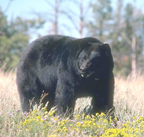Way Downstream
Along the Potomac River, fisheries experts from Maryland and Virginia are investigating a massive fish kill that littered beaches with thousands of dead fish, including keeper rockfish and huge croaker. Early indications suggest an oxygen-killing algae bloom caused by environmental factors, including loads of excess nitrogen pollution …
In Annapolis, Gov. Robert Ehrlich has appointed two popular new members to the Chesapeake Bay Trust’s board of Trustees. Torrey Brown has been a DNR stalwart and former secretary; Margaret Palmer, director of the Chesapeake Biological Laboratory, is a nationally known ecologist who knows a great deal about river systems …
On Sparrows Point, Gov. Ehrlich last week vowed to fight the plan by a Virginia company to build an LNG terminal. But his commitment was brought into question by a Washington Post disclosure that his personal attorney’s law firm is the registered lobbyist for the company seeking to build the gas plant …
In Western Maryland, black bear hair helped Wildlife and Heritage Service researchers determine that the state’s largest mammals are thriving. Last summer, black bear hair samples collected at trap sites throughout Garrett and Allegany counties were genetically analyzed as coming from individual bears. From that population study, Maryland’s bear population was estimated at 326 adult and yearling black bears in Garrett and western Allegany counties. Garrett and Allegany are the only Maryland counties where hunters can take bears.
That’s a 44 percent increase over the 227 adult and yearling bears estimated in 2000 by a similar study. That 326 will diminish by 10 to 15 percent during black bear hunting season, when hunters armed with 220 bear-hunting permits take a quota of 35 to 55 bears from October 23 to 28 and — if quota is not reached — December 4 to 9.
Around the U.S., the Chesapeake Bay is recognized as the country’s largest estuary with the help of a new postal stamp just unveiled last week. Chesapeake Bay is among a series of 40 Wonders of America stamps that Americans will use to send their cards, letters and bills in 2006. Our largest estuary finds good company among the Longest Hiking Trail: Pacific Crest Trail; Tallest Waterfall: Yosemite Falls; and Tallest Dam: Oroville Dam. The whole collection of stamps, including the Bay’s, come from afar — stamp designer and artist hail from across the country and back — designer Richard Sheaff is of Scottsdale, Arizona and artist Lonnie Busch draws from Franklin, North Carolina. Find them at your local post office or www.usps.com.
Our Creature Feature comes from the Piankatank River in Virginia, where those cownose rays are still dining in style. You may recall two years ago that locals chuckled when the Army Corps of Engineers, charged with oyster restoration, “carpet-bombed” one million oysters over the Great Wicomico River — into the waiting jaws of voracious rays. 
Two weeks ago, in another experiment, most of 775,000 oysters planted by the Chesapeake Bay Foundation and The Nature Conservancy on an artificial reef became ray lunch once more. “We were trying to do something different, but the rays came in a week or two early,” Tom Leggett of the Chesapeake Bay Foundation told Bay Weekly. The rays ate 94 percent of the oysters in just five days.
We weren’t surprised given where the seeding took place: near Stingray Point, Va.